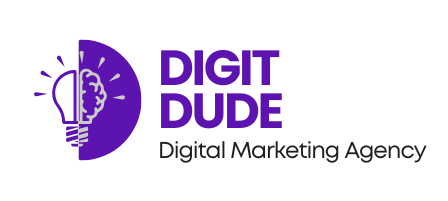In today’s digital landscape, businesses are constantly seeking ways to stand out from the crowd and attract their target audience. Two powerful strategies that have proven their worth time and time again are content marketing and search engine optimization (SEO). When used together, these approaches can create a formidable force that drives traffic, engages users, and boosts conversions. Let’s dive into how content marketing and SEO work hand in hand to propel your online presence to new heights.
The Symbiotic Relationship
Content marketing and SEO are like two sides of the same coin. Content marketing focuses on creating and distributing valuable, relevant, and consistent content to attract and retain a clearly defined audience. SEO, on the other hand, is the practice of optimizing your website and its content to rank higher in search engine results pages (SERPs). When these two strategies align, magic happens.
Quality Content: The Foundation of Success
At the heart of both content marketing and SEO lies quality content. Gone are the days when stuffing keywords into poorly written articles could boost your rankings. Search engines have become smarter, prioritizing content that genuinely provides value to users. Here’s why quality content matters:
- User Engagement: Well-crafted content keeps visitors on your site longer, reducing bounce rates and signaling to search engines that your page is valuable.
- Natural Keyword Integration: When you create in-depth, informative content, you naturally incorporate relevant keywords and phrases, which is exactly what search engines look for.
- Shareability: Great content is more likely to be shared on social media and linked to by other websites, both of which are positive ranking factors.
- Establishes Authority: Consistently publishing high-quality content positions you as an authority in your field, which can lead to better search rankings and increased trust from your audience.
SEO Best Practices for Content Marketing
To maximize the impact of your content marketing efforts, it’s crucial to implement SEO best practices. Here are some key strategies:
- Keyword Research: Before creating content, conduct thorough keyword research to understand what your target audience is searching for. Use tools like Google Keyword Planner or SEMrush to identify relevant keywords with good search volume and manageable competition.
- On-Page Optimization: Optimize your content by including target keywords in your title tags, meta descriptions, headers, and throughout the body of your content. Remember to keep it natural – don’t force keywords where they don’t belong.
- User Intent: Align your content with user intent. Are people looking for information, trying to make a purchase, or seeking a specific solution? Tailor your content to meet these needs.
- Mobile Optimization: With mobile searches accounting for a significant portion of web traffic, ensure your content is mobile-friendly and loads quickly on all devices.
- Internal Linking: Create a web of related content by linking to other relevant pages on your site. This helps search engines understand your site structure and keeps users engaged.
- Optimize for Featured Snippets: Structure your content to increase the chances of appearing in featured snippets. Use clear headings, bullet points, and concise answers to common questions.
Content Types That Boost SEO
While all types of quality content can contribute to your SEO efforts, some formats are particularly effective:
- Long-form Articles: In-depth guides and comprehensive articles (like this one) provide ample opportunity to cover topics thoroughly and naturally include a range of relevant keywords.
- How-to Guides: These practical pieces often align well with user intent and can earn featured snippet positions.
- Infographics: While search engines can’t read the text within images, infographics are highly shareable, potentially earning valuable backlinks.
- Videos: With proper optimization (transcripts, descriptions, tags), videos can appear in both regular and video search results, expanding your visibility.
- Case Studies: These demonstrate your expertise and often naturally include industry-specific keywords.
Measuring Success: Key Metrics to Track
To ensure your content marketing and SEO efforts are paying off, it’s essential to track relevant metrics. Here’s a table outlining some key performance indicators (KPIs) to monitor:
| Metric | Description | Why It Matters |
|---|---|---|
| Organic Traffic | Visitors coming from search engines | Indicates overall SEO performance |
| Keyword Rankings | Positions for target keywords | Shows progress in search visibility |
| Time on Page | Average time users spend on your content | Suggests content quality and relevance |
| Bounce Rate | Percentage of single-page sessions | Can indicate content relevance or user experience issues |
| Backlinks | Links from other websites to your content | Demonstrates content value and authority |
| Conversion Rate | Percentage of visitors taking desired actions | Shows content effectiveness in achieving goals |
| Social Shares | Number of times content is shared on social platforms | Indicates content resonance and potential for viral growth |
Staying Ahead: Trends in Content Marketing and SEO
The digital landscape is ever-evolving, and staying ahead of the curve is crucial. Here are some trends to watch:
- Voice Search Optimization: With the rise of smart speakers and voice assistants, optimizing for conversational queries is becoming increasingly important.
- AI-Generated Content: While AI can assist in content creation, human oversight remains crucial for maintaining quality and authenticity.
- Video Content: The popularity of video continues to grow, making it an essential part of any content strategy.
- E-A-T (Expertise, Authoritativeness, Trustworthiness): Google is placing increased emphasis on these factors, especially for YMYL (Your Money or Your Life) topics.
- Core Web Vitals: User experience metrics like loading speed, interactivity, and visual stability are becoming more important for SEO.
Conclusion: The Power of Integration
Content marketing and SEO are not separate strategies but interconnected components of a successful digital marketing approach. By creating high-quality, valuable content and optimizing it for search engines, you can attract more organic traffic, engage your audience, and achieve your business goals.
Remember, there’s no one-size-fits-all approach. Continuously analyze your results, adapt to changes in search algorithms and user behavior, and always prioritize providing value to your audience. With persistence and a strategic approach, the combination of content marketing and SEO can elevate your online presence and drive sustainable growth for your business.



